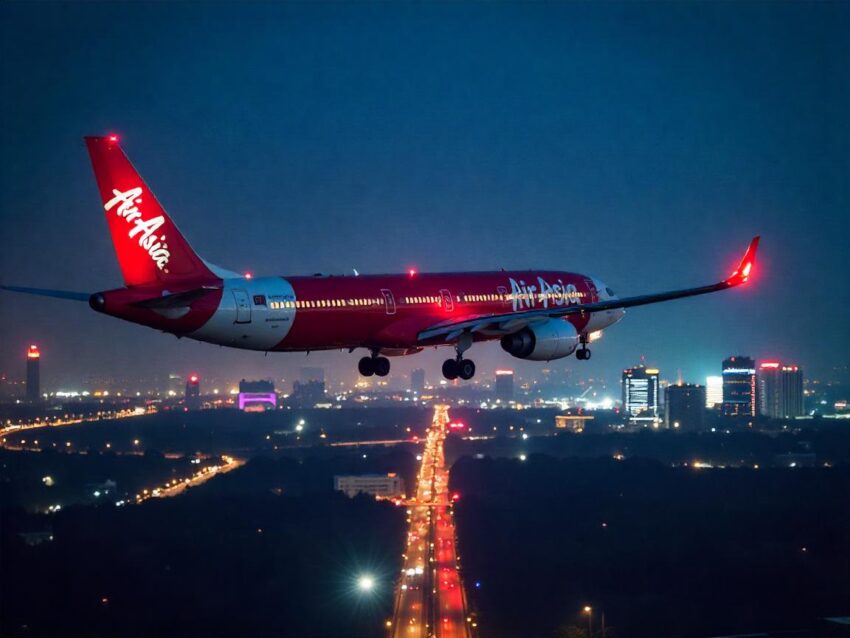Wednesday, June 25, 2025

In recent years, Southeast Asia has become a powerhouse for budget travel, with low-cost airlines dominating the skies. In 2025, about two-thirds of international seats in the region are filled by these budget carriers, a stark contrast to the global average where only about a third of international seats are operated by budget airlines. This growing dominance in the region has made Asian airline industry news all the more exciting as carriers rapidly expand to meet increasing demand, even as they face rising costs and intense competition.
Pressure to Grow or Exit
The landscape for low-cost airlines in Southeast Asia is fiercely competitive. While demand for air travel continues to rise, the industry’s players must grow at a rapid pace or risk being left behind. One of the most significant announcements in recent Asian airline industry news is the closure of Jetstar Asia, which will discontinue 16 routes from Singapore’s Changi Airport by mid-2025. This closure has underscored the challenges facing low-cost carriers in the region, with carriers needing to airline fleet expansion and routes to remain competitive.
Subhas Menon, the director-general of the Association of Asia-Pacific Airlines, summed it up perfectly: “At the end of the day, it is go big or go home.” As the market tightens and costs rise, airlines must aggressively scale their operations to meet increasing demand for affordable air travel, or they risk fading into obscurity.
AirAsia: Expanding its Reach
AirAsia, one of Southeast Asia’s most prominent low-cost airlines, is leading the charge in fleet and network expansion. The airline is working to optimize its routes, with plans to complete this process by the second quarter of 2025. AirAsia is focusing particularly on high-demand routes and targeting key markets like China, India, Malaysia, and Thailand, where visa policies are easing, making travel more accessible.
The airline is also considering expanding its fleet further, with CEO Tony Fernandes revealing talks for purchasing up to 70 long-range single-aisle jets and 100 regional jets to improve connectivity across Asia and beyond. AirAsia has already launched services to new destinations like Almaty, Kazakhstan, and Tashkent, Uzbekistan. With an eye on Central Asia, the airline hopes these new connections will eventually open doors to European markets.
VietJet: Growing Rapidly in Southeast Asia
VietJet, another major player in the region, is following a similar trajectory. The airline has signed a provisional deal for up to 150 Airbus A321neo planes at the Paris Airshow, signaling its intent to strengthen its regional presence and diversify its fleet. This is a key part of its ongoing growth strategy to capture more market share in Southeast Asia and beyond.
In addition to expanding its fleet, VietJet is adding new routes to its portfolio. For example, it recently began direct flights from Ho Chi Minh City to Nagoya and Fukuoka in Japan, while also launching a new service from Singapore to Phu Quoc, Vietnam. As the airline continues to grow, it is strengthening its position in the competitive world of low-cost airlines.
Cebu Pacific’s Fleet Expansion
Cebu Pacific, the Philippines’ leading low-cost airline, is also making waves in the Asian airline industry news. With an order for 152 new aircraft, Cebu Pacific is positioning itself for substantial expansion. The airline has launched new hubs in Davao and Iloilo and is rapidly adding new routes to international destinations in Taiwan, Thailand, Japan, and beyond.
By summer 2025, Cebu Pacific plans to operate 82 domestic routes, further solidifying its position as a dominant player in the region’s budget airline market. With plans for continued fleet expansion and route development, Cebu Pacific is investing in its future to keep pace with the increasing demand for budget flights across Asia.
Scoot’s Strategic Moves
Scoot, a subsidiary of Singapore Airlines, is also expanding its reach in the region. The airline is set to receive 14 to 16 new aircraft in 2025, which will include a mix of narrow-body jets and wide-body aircraft. Scoot’s strategy includes increasing services to both popular and emerging destinations.
Scoot recently launched its Singapore-Vienna route, becoming the only carrier offering non-stop flights between these two cities. Additionally, the airline will be taking over routes vacated by Jetstar, including services to Labuan Bajo, Indonesia, and Okinawa, Japan. With these expansions, Scoot continues to strengthen its position in the competitive low-cost airlines market.
The Growth of Budget Carriers in Southeast Asia
The growth of low-cost airlines in Southeast Asia is a clear reflection of the broader trends in the Asian airline industry news. Budget carriers are not just growing in terms of fleet size but are also expanding their reach into new regions. The competitive nature of the market is pushing these airlines to innovate, offering more affordable options for travelers while maintaining profitability despite rising costs.
As more travelers seek affordable ways to fly across Asia and beyond, these budget airlines are capitalizing on the demand. Whether it’s new routes, fleet expansion, or strategic partnerships, the airlines in Southeast Asia are making bold moves to establish themselves as key players in the global aviation industry.
Conclusion
Southeast Asia’s low-cost airlines are at the forefront of a rapidly changing Asian airline industry news landscape. With carriers like AirAsia, VietJet, Cebu Pacific, and Scoot all expanding their fleets and route networks, the region is set to see continued growth in budget travel. As these airlines face mounting pressure from rising costs and stiff competition, they are responding with bold strategies that will likely define the future of air travel in Asia.
The growing dominance of these low-cost airlines is reshaping the Asian airline industry news and demonstrating the power of affordable air travel in driving the global aviation market forward. As the industry continues to grow, Southeast Asia remains a central hub for budget flights, with airlines racing to keep up with demand while expanding their services.

